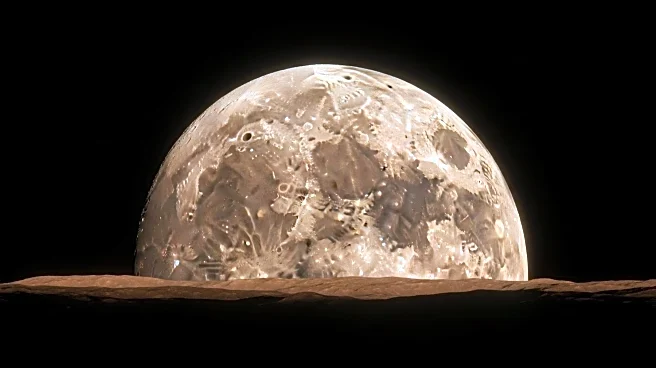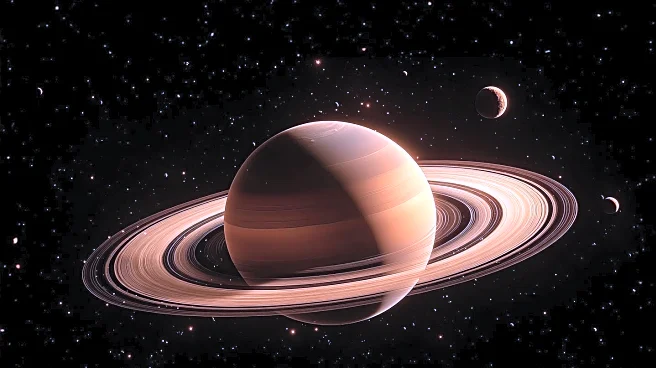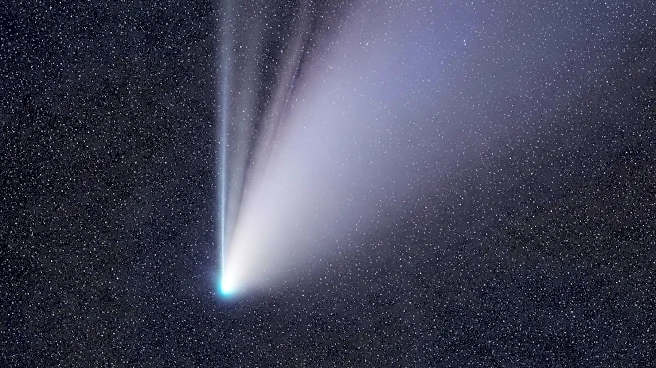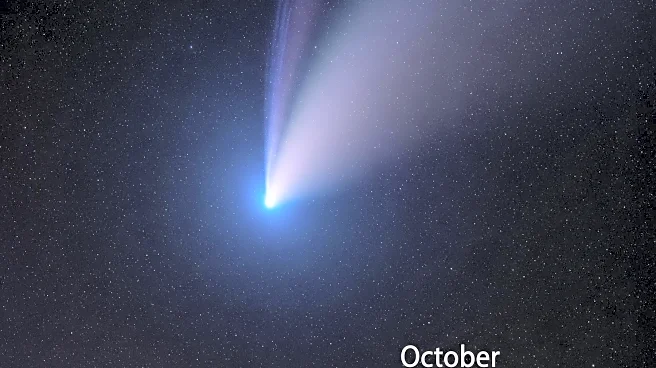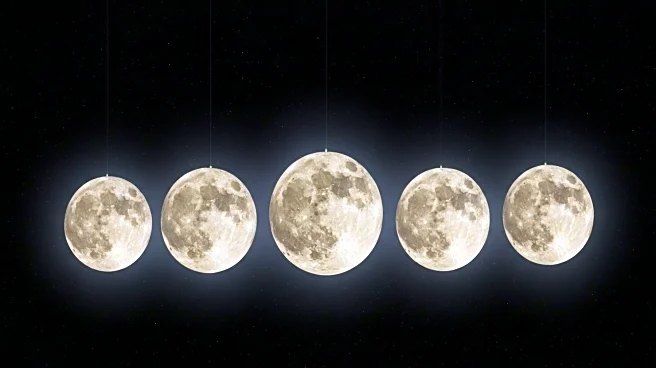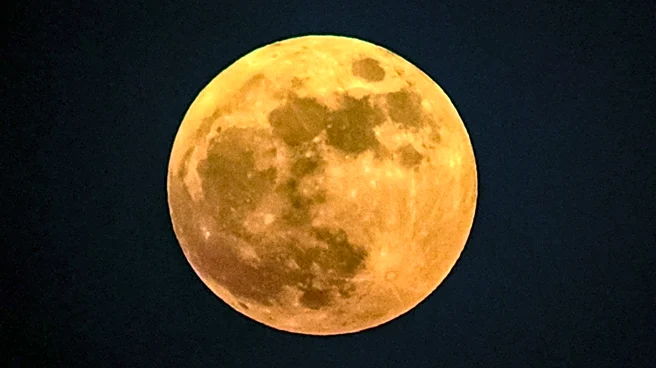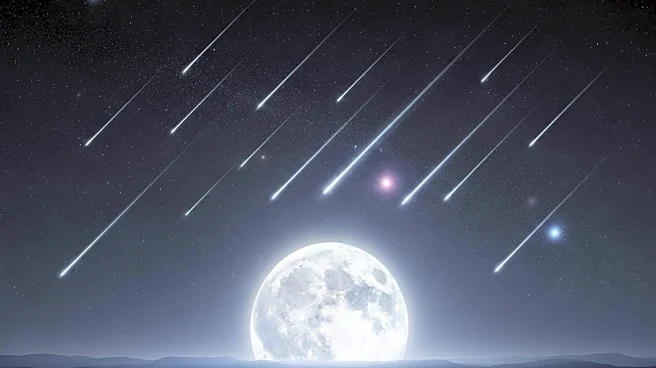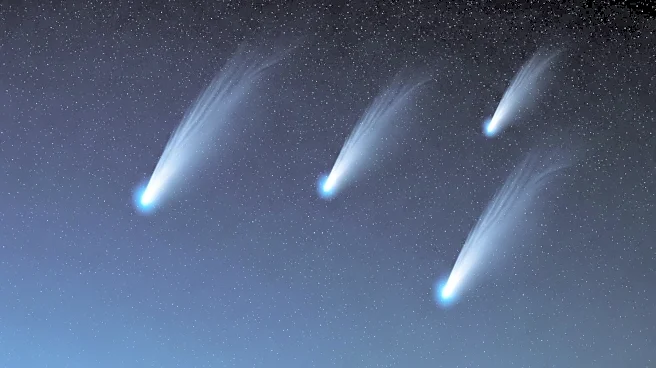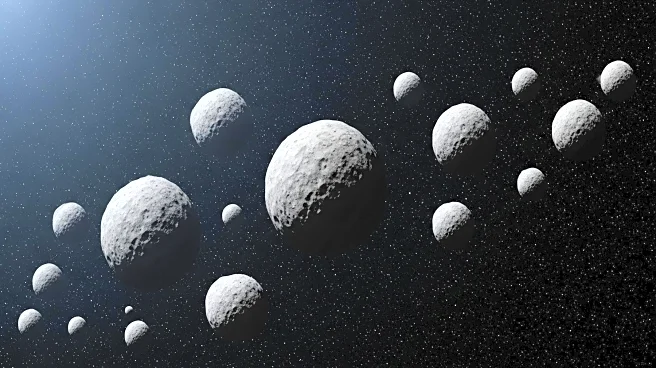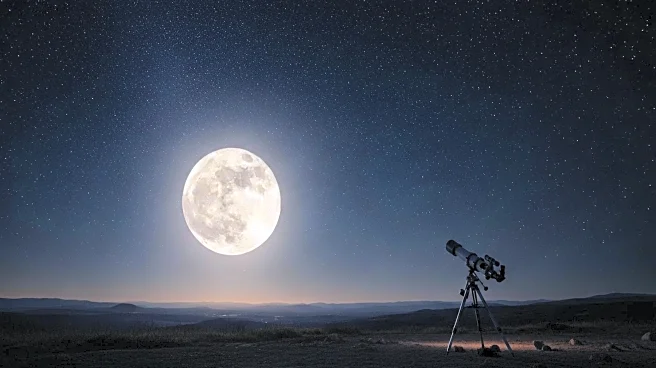What's Happening?
On October 2, 2025, the Moon's northwestern craters, J. Herschel and Philolaus, are experiencing sunrise, offering a unique observational opportunity. J. Herschel, an older crater with a diameter of 96 miles, shows a significantly battered rim and a floor covered in rubble. In contrast, Philolaus, a younger crater spanning 44 miles, features a sharper rim and two central peaks. These features will become more visible over the next few nights as the Sun continues to rise over the Moon's surface.
Why It's Important?
Observing the Moon's craters during sunrise provides valuable insights into lunar geology and the history of impacts on the Moon's surface. The contrasting features of J. Herschel and Philolaus offer a visual representation of the Moon's geological timeline, with older craters showing more wear and younger ones retaining sharper features. This event is significant for amateur astronomers and educators, as it provides a practical example of how celestial bodies evolve over time.

